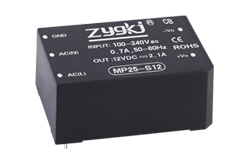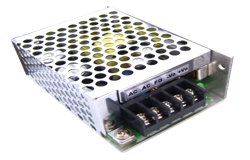news
Design and Analysis of a Bidirectional DC-DC Converter for Energy Storage Systems
Author: ZYG Power Module Time: 2023-6-19
Energy storage systems (ESS) have been gaining popularity in recent years due to the increased need for renewable energy integration and grid stabilization. One of the key components of an ESS is the bidirectional DC-DC converter, which is responsible for converting the DC voltage of the battery to the appropriate voltage level for the load or grid, and vice versa. In this article, we will discuss the design and analysis of a bidirectional DC-DC converter for energy storage systems.
Design Considerations:
The design of a bidirectional DC-DC converter for ESS involves several considerations. Some of the key design parameters are:
1. Power rating: The power rating of the converter should be chosen to match the power requirements of the load or grid.
2. Voltage rating: The voltage rating of the converter should be chosen to match the voltage level of the battery and the load or grid.
3. Efficiency: The converter should be designed to operate at high efficiency to minimize power losses.
4. Size and weight: The converter should be designed to be compact and lightweight to reduce the overall size and weight of the ESS.
5. Control scheme: The converter should be designed to operate under different control schemes, such as voltage or current control, depending on the application.
6. Protection features: The converter should be designed with protection features to prevent damage from over-voltage, over-current, or over-temperature conditions.
Design of the Bidirectional DC-DC Converter:
The bidirectional DC-DC converter consists of two stages: the boost stage and the buck stage. The boost stage is responsible for stepping up the voltage of the battery to the desired voltage level for the load or grid, while the buck stage is responsible for stepping down the voltage from the load or grid to the battery voltage level. The overall operation of the converter is controlled by a digital signal processor (DSP) which implements a pulse-width modulation (PWM) algorithm.
The boost stage consists of a boost inductor, a boost switch, and a diode. During the boost mode, the boost switch is turned on, and the inductor stores energy from the battery. When the switch is turned off, the energy stored in the inductor is transferred to the load or grid through the diode. The output voltage of the boost stage is given by:
Vout = Vin x (1 + D)
where Vin is the input voltage from the battery, D is the duty cycle of the PWM signal, and Vout is the output voltage.
The buck stage consists of a buck inductor, a buck switch, and a diode. During the buck mode, the buck switch is turned on, and the inductor stores energy from the load or grid. When the switch is turned off, the energy stored in the inductor is transferred back to the battery through the diode. The output voltage of the buck stage is given by:
Vout = Vin x (1 – D)
where Vin is the input voltage from the load or grid, D is the duty cycle of the PWM signal, and Vout is the output voltage.

Simulation and Analysis:
To evaluate the performance of the bidirectional DC-DC converter, we conducted simulations using MATLAB Simulink. The converter was designed to operate at a power rating of 5 kW and a voltage rating of 400 V. The efficiency of the converter was evaluated under different operating conditions, such as varying load and battery voltages.
The simulation results showed that the converter achieved an efficiency of over 95% under most operating conditions. The converter was also found to be stable under different control schemes, such as voltage and current control. Furthermore, the converter was found to be robust against over-voltage, over-current, and over-temperature conditions due to the implemented protection features.
Conclusion:
In this article, we discussed the design and analysis of a bidirectional DC-DC converter for energy storage systems. The converter was designed to operate at a power rating of 5 kW and a voltage rating of 400 V. The simulation results showed that the converter achieved high efficiency and was stable under different operating conditions. The implemented protection features also ensured robust operation of the converter. The designed bidirectional DC-DC converter can be used in various energy storage applications, such as renewable energy integration and grid stabilization.
Previous: AC to DC Converter Module – 12V Output
Next: 120V AC to 12V DC Converter: Transforming Voltage for Efficient Power Supply
relevant information
-
2023-5-18
24V AC to DC Converter: The Perfect Solution for Your Power Needs
In today\'s world, where every electric gadget runs on electricity, having a power source that provides regulated current and voltage is a must. This is where a 24V AC to DC converter comes in handy. It can convert an alternating current voltage of 24V into a direct current power supply for various operation needs.With the advent of technology and development taking place in every other sector, maintaining consistent power consumption still remains one of the significant challenges faced today. Power failures resulting in the sudden disconnection of devices are very inconvenient and can result in financial, productivity, or even life risk losses.To eliminate such mishaps and to control consistent flow/maintenance of voltage caused most of the time by different power...
View details -
2023-7-15
Introducing the EX Series DC-DC Converter wholesale: Efficient Power Conversion Made Easy
In today's technologically advanced world, the demand for efficient power conversion is at an all-time high. As electronic devices become more sophisticated and power hungry, the need for reliable and efficient power conversion solutions becomes paramount. This is where the EX Series DC-DC Converter comes into play, offering an easy and reliable solution to meet the growing demands of power conversion. The EX Series DC-DC Converter is designed to efficiently convert direct current (DC) from one voltage level to another, enabling seamless power transfer between various electronic systems. Whether it is in industrial applications, automotive systems, or renewable energy systems, the EX Series DC-DC Converter provides a versatile and efficient solution. One of the key features of the EX Series...
View details -
2023-11-9
Top Quality 1000W Modular Power Supply for High-Powered Devices
The importance of a reliable power supply cannot be overstated when it comes to high-powered devices. Whether you are a gamer, a computer enthusiast, or a professional in a demanding industry, having a top-quality 1000W modular power supply is essential for ensuring optimal performance and stability. A modular power supply is a type of power supply unit (PSU) that allows users to customize and manage their cable configuration. This flexibility is particularly valuable when dealing with high-powered devices, as it minimizes cable clutter and improves airflow within your system. By only using the cables you need, you can enhance the overall efficiency of your power supply. When it comes to high-powered devices, such as gaming PCs or workstations, a 1000W...
View details -
2023-12-28
Unleashing Performance: The Modular PC Power Supply Analysis
In the dynamic realm of computing, every component plays a crucial role, and the power supply is no exception. This blog post delves into the analysis of Modular PC Power Supply, unraveling its importance and the transformative advantages it brings to the table. What is Modular PC Power Supply and Why It's Important: Understanding the core concept of Modular PC Power Supply is paramount. This section delves into its definition and elucidates why it holds a pivotal role in enhancing computer performance. Explore the heart of your computer's power dynamics and why this component is a game-changer. Advantages Flexibility and Customizability: Dive into the first advantage – the flexibility and customizability that Modular PC Power Supply brings to your computing...
View details -
2023-6-15
AC to DC Converter Module for 12V Power Supply
An AC to DC Converter Module for 12V Power Supply is an important component for electrical systems that require a stable and reliable power supply. In this article, we will explore what an AC to DC Converter Module is, how it works, its applications, and some factors to consider when choosing the right module for your specific needs. What is an AC to DC Converter Module for 12V Power Supply? An AC to DC Converter Module is a device that converts alternating current (AC) to direct current (DC). The module is designed to take an input of AC power, such as from a wall outlet, and convert it to a stable and reliable DC output. The 12V output is common...
View details -
2023-11-27
Development of High Voltage Power Supply Module: Enhancing Electrical Power Distribution
In recent years, there has been a growing demand for high voltage power supply modules that can enhance electrical power distribution. These modules play a crucial role in various industries, such as aerospace, telecommunications, and medical equipment. This article aims to discuss the development of high voltage power supply modules and their impact on electrical power distribution. Overview of High Voltage Power Supply Modules High voltage power supply modules are electronic devices that convert input voltage to higher voltage levels, typically in the range of several hundred volts to several thousand volts. These modules are designed to deliver a stable and reliable power output, ensuring efficient operation of electrical systems. Enhancing Electrical Power Distribution The development of high voltage power...
View details


















